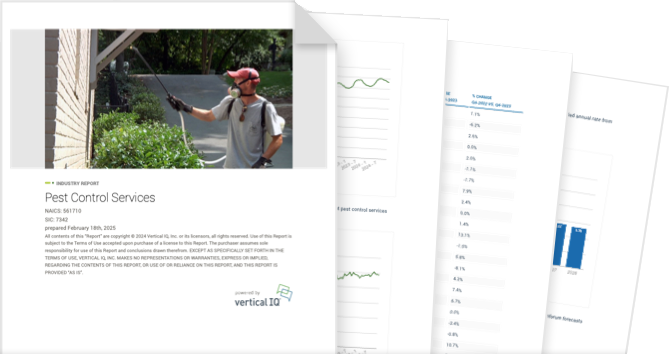US Accommodation and Food Services Sector NAICS 72

Unlock access to the full platform with more than 900 industry reports and local economic insights.
Get access to this Industry Profile including 18+ chapters and more than 50 pages of industry research.
Industry Summary
The 771,900 establishments in the US accommodation and food services sector prepare meals, snacks, and beverages to customer order for immediate consumption or provide short-term lodging for travelers and vacationers.
Economic Sensitivity
The accommodation and food service sector is driven by discretionary spending and is vulnerable to economic downturns.
Labor Intensive, High Turnover
Food service and accommodation operations are labor-intensive, and the sector struggles with turnover.
Recent Developments
Dec 13, 2025 - 2026’s Top Menu Trends
- Three dominant themes forecast to shape US menus in 2026 are: comfort, global flavors, and value, according to the National Restaurant Association’s 2026 What’s Hot Culinary Forecast published in November. Based on surveys of hundreds of culinary professionals polled in October, the report shows consumers gravitating toward nostalgic, familiar foods, like smashed burgers, and global influences such as Caribbean curry bowls. Diners are also seeking flavor escapism, blending comfort with adventurous tastes. Not surprisingly, affordability and wellness remain central, driving interest in value menu options that won’t break the bank, protein‑packed meals, and low‑alcohol beverages. These trends reflect a broader desire for satisfying, approachable dishes that still feel fresh and globally inspired. For operators, the forecast signals strong demand for menu items that balance comfort, creativity, and cost‑consciousness heading into 2026. Allergen-friendly menus, ingredient transparency, and compostable/reusable packaging are other trends for 2026, per NRA.
- The US lodging sector is facing a new normal as revenue per available room (RevPAR) softens and AI reshapes demand in 2026, PwC Hospitality Directions forecast in December. RevPAR, the sector’s primary performance benchmark, is expected to dip 0.2% in 2025 before rising 0.9% in 2026, reflecting slower growth and lingering macroeconomic challenges such as high interest rates and inconsistent travel demand. Business and international travel remain weak, while leisure travel shows strength, especially in secondary markets. Supply growth is returning, which may pressure occupancy and margins if demand doesn’t keep pace. Moreover, competitive dynamics are shifting as AI and digital behaviors reshape booking and operations, requiring hotels to optimize technology, data, and branding strategies to stay visible and relevant, per PwC. Hotel owners and operators are encouraged to focus on cost discipline, margin protection, and strategic investment to navigate tighter conditions.
- A majority of hotel operators are scaling back development plans amid rising costs and softening consumer demand, a new survey conducted by the American Hotel & Lodging Association (AHLA) finds. The survey, conducted in late August, gathered input from nearly 400 hotel property owners and operators nationwide. It found that development and renovation plans remain under pressure, with 32% of respondents delaying projects, 24% scaling back, and 8% canceling projects entirely. Only 8% of property owners/operators reported moving ahead with new investments. Also, nearly half of the respondents (49%) reported being understaffed, underscoring ongoing workforce challenges that add to financial uncertainty. Those polled reported that leisure travel continues to soften, with 30% of hotels seeing declines in completed leisure stays and 26% reporting drops in bookings compared to the same period last year. Business, group, and government travel also showed softness, with 15–17% of properties reporting decreases.
- Younger consumers are cutting back on spending, with restaurants among the first to feel the impact, two new studies show. According to the semi-annual Taking Stock with Teens survey, teens’ annual spending has declined by 6% year-over-year and is 1% below the average spending levels from the past 10 years. Also, research from investment bank TD Cowen finds that consumers ages 18-34 are under more pressure than the average consumer. The pullback among younger consumers, who make up about 40% of all restaurant guests, has major implications for the industry, especially the fast-casual segment, which relies heavily on younger guests. Restaurants are attempting to “future proof” their positioning by rebranding or launching youth-focused loyalty, digital, or campus initiatives to maintain engagement with younger audiences. Operators may need to rethink marketing, menu pricing/value tiers, loyalty incentives, and targeting to shore up revenue during lean times.
Industry Revenue
US Accommodation and Food Services Sector

Industry Structure
Industry size & Structure
The accommodation and food services sector comprises 771,900 establishments that employ 14.2 million workers and generate $1.3 trillion in annual revenue, according to government sources.
- The accommodation and food services sector represents 3.7% of the nation's Gross Domestic Product (GDP) and employs about 9% of the country's workers.
- The sector is fragmented with the 20 largest firms representing 13.3% of revenue.
- In addition to employer establishments, the accommodation and food services sector has 491,800 owner-operated establishments with no employees. The subsectors with the highest number of nonemployer establishments are special food services (56%), restaurants and other eating places (23%), and traveler accommodation (11%). The owners of nonemployer firms typically perform the work and may outsource support functions like marketing and accounting.
- The US Accommodation and Food Services sector shed nearly 20% of its employees in 2020 due to the pandemic but recovered to surpass 2019 levels in 2024, according to the Bureau of Labor Statistics.
Industry Forecast
Industry Forecast
US Accommodation and Food Services Sector Industry Growth

Source: Vertical IQ and Inforum
Vertical IQ Industry Report
For anyone actively digging deeper into a specific industry.
50+ pages of timely industry insights
18+ chapters
PDF delivered to your inbox
